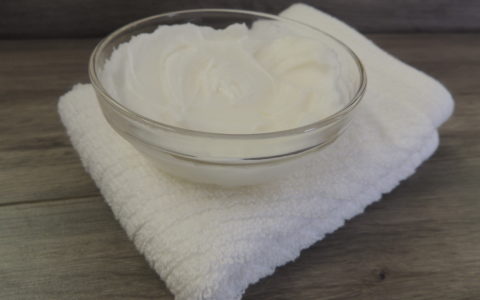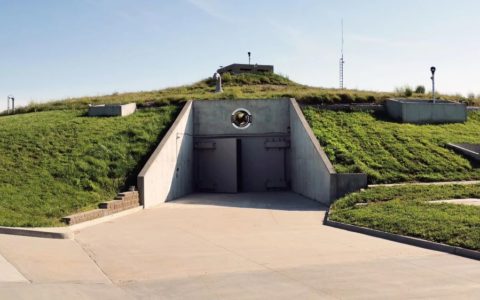
Like millions of other preppers, I live in the southwest portion of the United States. That affords me the advantage of great scenery, mountaintop views and vast areas of land where I can escape the normal everyday business pressures of life by finding an outdoor area to escape into and reconnect with nature. Those vast open landscapes, however, expose an area that most preppers pay little attention to normally, which is how to communicate over those vast areas of land and communicate off-grid completely when needed.
In case you haven’t already noticed, time after time the news media reports that an experienced hiker, hunter, camper, or outdoorsman was found hurt or later found dead because they couldn’t notify anyone that they needed medical help. So even though their cell-phone worked in town, their departure into the wilderness created their own personal “grid-down” scenario, as their only means of semi-reliable long-distance communication (their cell phone) was made useless by their decision to head into the great outdoors (and way beyond their carrier’s cell-phone range).
As both an amateur Radio operator of 35+ years (and owning a company involved in two-way communications), I agree with most ham radio operators and FEMA officials that the “best” grid-down communication tools (including your own personal grid-down emergency that might arise) normally involve ham radio or satellite phone gear, so let’s look at the various types of communication gear and see how they hold up in a disaster or emergency scenario (and realize that your personal “grid-down” situation will share similar off-grid communication challenges).
Many folks first step into two-way radio frequency (or RF) communications usually doesn’t involve ham radio or satellite phones, sometimes due to their perception of the learning difficulty, or the equipment cost, or even them not understanding how the different radio bands allow hams to “target” our communication ranges (vs. a single band like CB or FRS/GMRS).
I also don’t believe that ham radio is the “only” way for EMCOMM (emergency communications) either, but not because of my Extra Class amateur radio license, it’s because of the vast ham radio infrastructure (located all over the world) available to any licensed ham (plus the relatively cheap cost to jump into either ham radio or satellite communications now).
According to the ARRL (Amateur Radio Relay League), we have just over 22,000 U.S. ham radio repeaters as of January 2015, with thousands more located around the world. Here’s an example of how that existing infrastructure can make a huge difference:
Imagine a disaster that sweeps through an area, wipes out the local electrical grid, takes out the cell tower(s), destroys the local public service repeaters (Fire, Police, etc.), and takes out the local GMRS and ham radio repeaters, plus generally wrecks the community with downed trees, power lines, etc.
So if everything involving local communications is toast (or if you find yourself 25 miles from the nearest cell tower deep in the back country of your state) – what’s the difference between using a small handheld (HT) ham radio vs. a CB, FRS/GMRS, Marine, or MURS radio? Won’t satellite communication be affected as well?
First, the vast quantity of communication options still available to the licensed ham, including more repeaters and more HF bands to use, allow us to use equipment outside of the disaster zone (just like a satellite phone user). There are 566 repeaters in my home state of AZ, so the odds of another ham radio repeater still being within range (and unaffected by the disaster) is quite high. Your states repeater numbers are probably similar – look them up yourself and compare.
Second, newer 2nd generation satellite phones use low earth orbiting repeaters approximately 800 miles up, well above any natural disaster. What’s kept the public from using them more frequently (until now) was cost, but that’s no longer a factor, as satellite service is available for just $65.00 a month from us (that works out to just $2.17 a day with a free sat phone).
Many of the ham repeaters also have one or more backup power sources available, and thousands of them support IRLP or EchoLink modes, allowing those same small HT radios to “link” one repeater to another – around the world if needed.
Imagine being able to contact your family (living in another state) to tell them you’re ok just minutes after a disaster strikes – when the phone lines are down and the Red Cross hasn’t even arrived yet (or when you’ve fallen and broken your leg miles away from your vehicle and unable to reach a cell-phone tower). Hams (and satellite phone users) enjoy the security of knowing they can get a message through in virtually any situation (without depending on a fragile wired or cellular infrastructure that can easily fail or be overloaded when a disaster strikes).
Hopefully you’re now convinced that a small ham radio will provide much more range (with repeaters) than anything else of similar size, cost, or weight – short of a satellite phone (which we also offer). Let’s also explain the various radio(s) you might already have (or are considering) and what their true capabilities are (vs. the marketing hype).
FRS/GMRS, Marine, and MURS radios generally provide approximately 1 mile of communication range for every 1 watt of power, sometimes much less (depending on several factors including height of the antenna, surrounding buildings, mountains, etc.).
FRS (or Family Radio Service) units are all 1/2 watt radios with non-removable antennas that will normally provide a range of approximately 1/2 mile. FRS/GMRS combo radios usually have all 14 FRS UHF channels plus 8 more GMRS UHF channels, but these combo radios still have the non-removable factory antenna, plus their power levels are automatically set within the radio (1/2 watt on all 14 FRS channels, and normally up to 5 watts on only the 8 GMRS channels). Real world FRS/GMRS communication range is much less than the “Up to 50 Mile Range” marketing hype shown on the box.
Marine band handheld radios generally have 16 VHF channels (but can have as many as 88). Most have non-removable antennas, which help keep some of the handheld radios waterproof. Most radios have 1 or 2 watts output, but some claim up to 5 watts.
MURS radios (Multi-Use Radio Service) was previously a VHF business band service that required a paid license (like GMRS), but several years ago the FCC eliminated the license. Some MURS handheld radios can have up to 5 watts of power, but most have 2 watts. MURS units can have removable antennas, which will allow better performance than their FRS, GMRS, or Marine radio counterparts, but MURS radios tend to cost more.
CB radio communications have several unique issues to overcome in our disaster example. First, it’s highly unlikely that an outdoor CB antenna would have survived (if all other public service, GMRS, and ham radio fixed installations didn’t). That leaves mobile CB’s or handheld CB radios, but that still doesn’t overcome the biggest issue with using CB for emergency communications – which is physics.
CB radio (within the U.S.) is located between 26.965 and 27.405 MHz. That’s lower in frequency than Marine or MURS bands (approximately 152 MHz) or FRS/GMRS bands (approximately 462 MHz). Being on an HF band allows the CB signal to “skip” great distances (depending on the current condition of the various layers of the earth’s ionosphere, which will cause the HF radio wave to reflect). That skip effect, however, can cause EMCOMM problems.
Unlike hams (that have multiple HF bands, each with a different angle of radio wave reflection – thus allowing hams to “target” a range area that we wish to communicate with), CB users are stuck with whatever band conditions are currently present. So a CB signal from Phoenix may be heard in Pittsburgh, but a few minutes later might now be heard in Miami. That makes for some interesting CB conversations, but it means using CB radio for EMCOMM is highly unreliable.
Some also have the belief that when the “skittles hits the fan” (SHTF), they will just grab any radio (including any ham or GMRS radio) and use it, since they believe no one will care at that point. While that “may” be correct in a truly end of the world event, anything short of that will mean those folks will be very surprised to learn it simply won’t be that easy.
Counting on using the local GMRS repeater has already been discussed (remember the local GMRS repeater has already been destroyed in our scenario). Amateur radio repeaters are monitored for non-licensed use (even during Hurricane Katrina, Hurricane Sandy, wildfires, floods, and earthquakes) and the control operators have different ways of restricting non-licensed use by various methods. Waiting until the SHTF is NOT the time to discover you can’t access the repeater that you had counted on for your emergency communication requirements.
The Technician Class amateur radio (or ham) license isn’t difficult to obtain. (We offer two different methods of study, one is a $10 book and the other is a $25 internet based online training course that will provide you with all the information you’ll need and guarantees you’ll pass.) Your actual FCC test consists of just 35 questions. Pass the test and join the 730,000 plus hams already in the U.S.
I’m all for using any radio you have available in an emergency situation, but you simply can’t count on your home’s outdoor antenna(s) to have survived, nor should you count on any local infrastructure, which means you really have to count on the radio gear you can carry (and perhaps what’s in your vehicle). Most hams prepare a radio “go-bag” (or BOB) in advance, an idea I highly recommend. With the rapid cost reduction in satellite gear, more of them are also including a satellite phone with their preparedness equipment as well, or they simply use it as an everyday carry tool (especially if they own a business).
Since both amateur radio and satellite phone service provides so many more reliable emergency communication options it seems silly to depend on CB, FRS/GMRS, Marine, or MURS radios during an emergency (options that provide you with the least amount of range – when you need it the most). With today’s low cost two-way ham radios and satellite phones, combined with the ease of getting your license, two-way ham radio communication is really a great EMCOMM choice, but many business owners also write off the monthly $65 satellite service plan cost as a legitimate business expense. Whichever you choose, don’t pack your bug out bag without one.
Other self-sufficiency and preparedness solutions recommended for you:
Healthy Soil + Healthy Plants = Healthy You
The vital self-sufficiency lessons our great grand-fathers left us
Knowledge to survive any medical crisis situation
Liberal’s hidden agenda: more than just your guns
Build yourself the only unlimited water source you’ll ever need
4 Important Forgotten Skills used by our Ancestors that can help you in any crisis






















